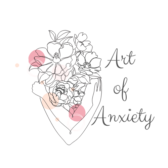Discover how to use the FEAR acronym to unpack the barriers holding you back from your goals (and how to use DARE to reach them).
When it comes to living the life you deserve, reaching your goals is essential. But sometimes, reaching those goals is terrifying. More than once, I’ve let fear hold me back from doing the things I want.
Even at this very moment, fear is holding me back from doing the thing I want. Fear of failing, fear of making a bad choice, fear of setting a course of events into action that could be catastrophic. But if I let fear hold me back, I’ll never become the person that I’m meant to be.
To help unpack what’s holding you back, the F.E.A.R. acronym is useful. The antidote to F.E.A.R. is D.A.R.E. This technique is a part of Acceptance and Commitment Therapy and was introduced to me by an incredible physiotherapist (and an even more amazing woman).

What is the FEAR Acronym?
In this specific case, F.E.A.R. is an acronym. When we fail to accomplish a goal, it’s usually because of the following reasons (or barriers).
- F = Fusion
- E = Excessive Goals
- A = Avoidance of Discomfort
- R = Remoteness from Values
The acronym is a little cryptic, so I’ll unpack each section.
Fusion
Fusion refers to the things your mind tells you that get in the way when you get caught up in it. Things like ‘You can’t do it”, “I’ll fail”, “I’m too weak”, “I’ll never be able to do it”, “It’s too hard”, “I’ll do it later”, “Am I good enough?” or “What if the worst happens?”. Any of these sound familiar?
As an anxious person, this mind-talk can really hold you back, and it’s not easy to ignore. It takes practice and a lot of willpower. It’s almost impossible to reach your goals if your mind is holding you back.
Excessive Goals
The ‘Excessive Goals’ part of the FEAR acronym refers to the type of goal or goals you have created. You’ll never accomplish your goal if it is too big or you lack the necessary resources to reach your goal. These resources can come in the form of skills, time, money, or health.
Practical things are needed to accomplish goals, and if you don’t have access to these things, of course, you won’t be able to get where you need to go.
With excessive goals, you’re more likely to get overwhelmed and inevitably give up
Avoidance of Discomfort
Being uncomfortable is a part of life, but it’s also horrible. Avoiding discomfort is something I’ve tried to do my whole life. And it’s counterproductive. To truly avoid discomfort, you have to avoid life.
If you are unwilling to make space for the discomfort that reaching your goal brings, then you’ll never reach it. You have to make room for things like anxiety, fear of failure, frustration and exhaustion.
You won’t accomplish anything by avoiding your feelings or locking yourself in your bedroom (trust me, I’ve been there).
Remoteness from Values
Our values make us who we are. When we lose sight of why our goal is important to us, it can keep us from accomplishing it. When things get hard, it is easy to lose touch with or forget why our goal is important or meaningful.
It’s important to remind yourself why your goal is important to you and what you are trying to achieve.



What is the DARE Acronym?
The antidote to F.E.A.R. is D.A.R.E. This acronym stands for various strategies that can help you get through the barriers and help you work towards your goal (and the life you want).
- D = Defusion
- A = Acceptance of Discomfort
- R = Realistic Goals
- E = Embracing Values
Defusion
Strategies in Defusion revolve around acknowledging your thoughts, challenging your thoughts and putting things into perspective.
What stories are you telling yourself? What thoughts are you paying too much attention to? Why do you feel incapable? Find concrete proof and prove your mind wrong.
Acceptance of Discomfort
Accepting Discomfort is powerful. Once you can sit through the uncomfortable feelings and sensations, nothing can stop you.
Strategies you can use here include naming your feelings, observing sensations, becoming present, breathing into them and making room for them. If it’s a huge struggle, you can always use sensory regulation strategies or start journaling.
Realistic Goal-Setting
If reaching your goal is important to you, you have to commit to it and the skills you need in order to reach it. Even using the SMART technique could be useful.
If you can’t don’t have the skills needed, set goals around learning those skills. Your goal is too big? Break it down into manageable pieces. You don’t have the necessary resources? Make a plan for how to get them. If you don’t have time, figure out what you are willing to give up in order to create that time.
And if your goal is simply too big, then set a new one.
Embracing Values
If you truly want to reach your goal, nothing can stop you, not even the barriers outlined in the FEAR acronym. Strategies to help you embrace your values include connecting to what matters to you about your goal.
Why is this goal important to you? Is it truly meaningful? Does it align with your values? Does the goal help you move your life in the direction you want to go?

Reaching Your Goals
The most important thing you need to ask yourself is,
“Am I willing to do what it takes to reach my goal?”
This means dealing with the difficult thoughts and feelings that will inevitably show up. It means not getting caught in them or struggling with them. You’ll need to take action to be able to do what matters.
Spend some time thinking about the following:
- Does reaching your goal really and truly matter to you?
- If it does, what does it cost you if you keep avoiding it or putting it off?
- Would you rather have the vitality-draining pain of staying stuck or the life-enhancing pain of moving forward?
Pain is Inevitable
No matter what you choose, there will be pain and discomfort. You will experience grief as you leave things behind and joy as you embrace the things awaiting you. The FEAR acronym can help you figure out exactly what’s keeping you from reaching your dreams.
Sometimes curating the life you want means letting go of the things you love. For me, this is by far the hardest part. But it’s not the only hard part.
If you’re choosing to create life-changing goals, it is going to be hard. But if you truly want it, you can get there. You can curate the life you dream of. I have faith in you.


Kathryn is the creator of Art of Anxiety. She was diagnosed with GAD and MDD at 16 and has been working every day to master the art of anxiety ever since. Her favorite things to do are aerial yoga and hanging out with her cats while reading a good book.




